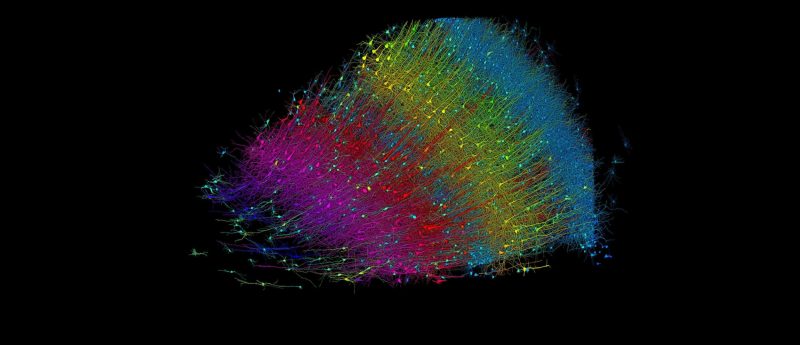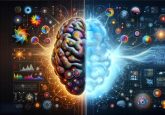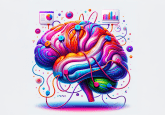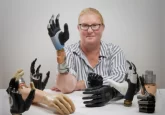Reconstructing the largest ever section of the human brain

In an unprecedented new study, researchers have digitally reconstructed the largest section of the human brain to date, encompassing more than 150 million synapses in a mere cubic millimeter of space. The feat has already unveiled yet-unseen secrets about the brain’s intricate architecture, with more likely to come as the research community trawls through the openly available data.
Published in Science, the research was a collaboration between researchers at Harvard University (HA, US) and Google (CA, US). The team utilized a staggering 1.4 petabytes (1.4 million gigabytes) of imaging data to reconstruct the slice in its entirety, including 57,000 cells, about 230 millimeters of blood vessels, and nearly 150 million synapses, representing the most comprehensive view of the brain’s structural organization ever.
Jeff Lichtman, who led the study, told us “There’s there’s an unlimited amount of things you could do with [this dataset], which we did a minuscule number. And in several cases, we’ve already found things that were not consistent with the world view that’s in the textbooks.” Among the significant findings, the study revealed a disproportionate number of glial cells, which are the structural glue of the brain, relative to neurons and identified rare, yet potent, axonal inputs that could form up to 50 synapses. These insights highlight previously underappreciated aspects of the temporal cortex and suggest new pathways for understanding how synaptic and neural circuits contribute to brain function and disorders.
How did they do it?
This was by no means a small feat. Jeff told FMAI that this was the result of more than 10 years of work, and emphasized the impossible nature of achieving this without modern computing techniques and huge amounts of processing power.
The cortical brain sample, taken during surgery from an epileptic patient, was sliced into 5,019 pieces. Approximately 1000 times thinner than a human hair, each slice was meticulously imaged using serial section electron microscopy, taking more than a year to complete.
Manually processing such a colossal number of features within each slice – let alone the whole volume – would be near impossible, so the researchers opted for a combination of machine learning techniques. Firstly, a Flood-Filling Network was developed by the Google team to segment the tissue. This is a type of convolutional neural network (CNN) that works outwards from a single pixel, continually expanding through the three-dimensional space to trace neurons, blood vessels, glia and other components (see here for a beautiful example of this in action). These networks are particularly well suited to highly complex segmentation tasks and ideal for identifying intricate cellular structures such as those in this study. A combination of a U-Net CNN and a two-class ResNet-50 CNN was then used to identify synaptic sites and classify them – as excitatory or inhibitory – respectively.
Implications
The researchers have not only pushed the boundaries of what’s possible in terms of brain imaging resolution but also developed new tools for data visualization and analysis. These tools, along with the vast dataset, have been made freely available to the scientific community, providing an invaluable opportunity for discoveries.
This work opens up new avenues for exploring the complexities of the human brain. As the authors suggest, further studies leveraging this detailed connectome could unveil deep insights into the workings of the brain, with potential implications for understanding and treating a variety of brain disorders.
What’s next?
Jeff and his research team have huge ambitions and are already working on a number of exciting projects. Most notably, they will be attempting to reconstruct an entire mouse brain. This will involve more than 1000 times the amount of data. Over one exabyte to be precise.
Interested to learn more? Sign up to catch our exclusive interview with Jeff coming soon. He discusses this work and gives a mind-boggling insight into his future work with Google and his thoughts about modelling a human brain in its entirety.





